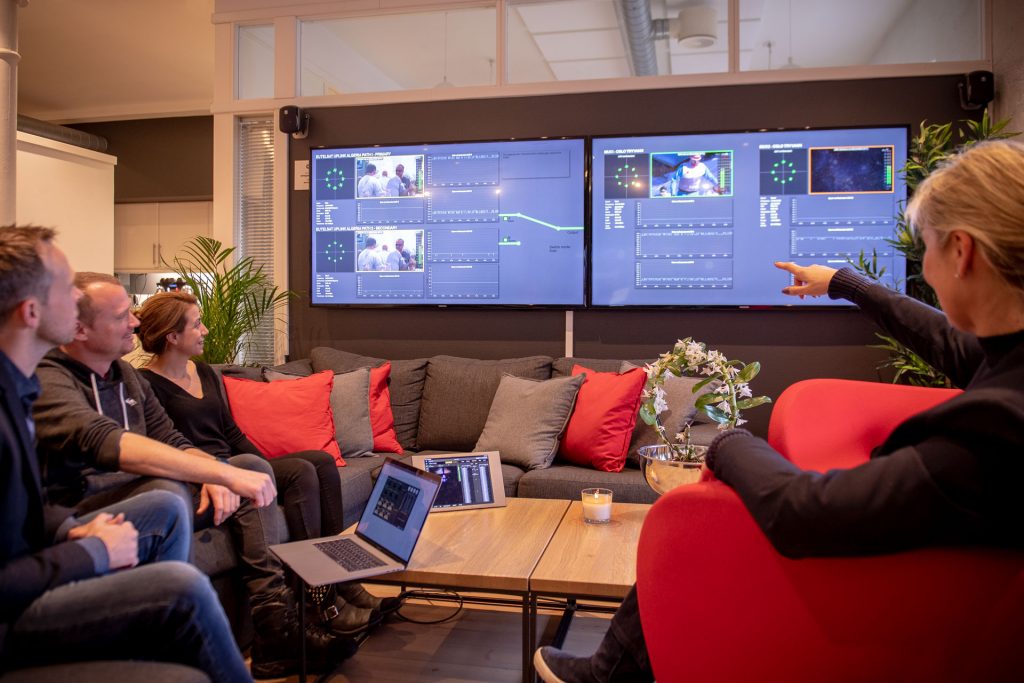Bridge Technologies March Blog Post
March 26, 2020
Changing dynamics in the Broadcast Industry
One of the first lessons in business development is to always make sure you’re talking to the decision maker. For a young salesperson, it can be all too easy to find someone in an organisation who is happy to talk for hours, and to make all the right noises about your solution – but very often, that’s not the person who will sign the order/write the cheque.

In our industry, that decision maker has changed over the years. Years ago, the broadcast industry was mainly technical – and mainly technology-oriented . To choose the right equipment, you had to understand what made it work. You had to know how its performance would affect your workflow. It was important to match its specific functionalities with your needs. It was all about the bits and bytes.
That’s all still very important, but the broadcast industry has changed in two important ways. The first is that, back in the day, broadcast equipment was ‘application-specific’. Systems were designed specifically for broadcasters – and architectures were proprietary to each manufacturer. They needed to be purpose-built: broadcast applications require a great deal of computing horsepower – and that level of compute capability wasn’t generally available.
Increasingly powerful
It’s possible to identify how that began to change by tracing the history of the PC. Originally somewhat ‘light weight’ in computing terms, they became increasingly powerful and increasingly capable. Companies like Avid were quick to seize the opportunity: you could use PCs for a host of post-production tasks at much less expense, and with much greater flexibility (freelancers could work from home!)
(There’s another excellent example. Companies like Symbolics and Texas Instruments built machines that were optimised to execute the LISP language. Within two years of their introduction, an 80486-based PC could outperform them.)
Back then, we were also witnessing the beginning of a new era in communications. The advent of the World Wide Web in the 1990s meant everyone was talking about IP – and how it could transform everything. At Bridge, we were in the vanguard of seeing the opportunity IP presented for broadcast and how the industry would migrate to standards that would deliver user freedom from proprietary architectures; simple interoperability; and greater flexibility that would change the financial dynamics of media creation and distribution forever.
There’s an extent to which the advent of industry standards like Windows and IP began a democratisation of technology: technical understanding was still important – but it wasn’t the ‘be-all and end-all’ it once was.
Fiercest competition
The second important change in the broadcast industry is that it became a battleground for the fiercest competition. Where once, creating and distributing content for consumer consumption was the preserve of the few, those consumers are now being fought over by huge numbers of potential providers. With the democratisation of the underlying technology, broadcast has become an easier business to get into.
With that fierce competition comes a different focus. Now, the questions include: “How will this solution enable me to increase revenues?” “How does what you’re offering help me maximise customer loyalty and reduce churn?” “How can you enable me to reduce my OPEX and contribute to my profitability?”
In response to all these questions we recently announced Integrated Services monitoring (ISM) that represents the accumulation of our 15+ years of experience in developing, manufacturing and deploying the most advanced solutions to ensure the maximum uptime of content production, contribution and distribution networks around the world. From the network engineer on a remote site to personnel at the master control centre (MCR) who need visibility into everything that’s going on to management who require SLAs and other insightful indicators of overall network performance, Integrated Services Monitoring is there to deliver what they need, when they need it.
Our innovative approach aims at providing appliances that translate the complexity of technology into an easy-to-interpret data visualization and that are easily expandable being HTML5-based.

Increasingly, the decision about which solutions to buy is a financial one that is based on ROI. And that’s a challenge for us when we’re demonstrating and discussing what we’re offering. Yes, the customer’s technical evaluation is still hugely important: we need to be as capable as we’ve ever been when it comes to answering questions about how it works, how it performs – and why it’s better than competing offerings. And, of course, there will probably be multiple stakeholders, each with their unique careabouts. But now, there’s an added dimension: how can a network probe have a positive financial impact on the prospect’s business? How does monitoring the network save money or generate revenue? How can we help the customer improve profitability?
We know, of course, that it – and we – can do all those things: our challenge is to articulate that. It’s still important that our sales arguments are technically compelling, because that’s what the specifiers and recommenders and decision influencers want and need from us. It’s a simple equation. Great service delivered efficiently equals happy customers and growing profits. That should please everyone from engineering to the boardroom.
Most of all, though, the Bridge solution has to make financial sense to the person who writes the cheques – and by the way once the cheque is signed, the products are yours, you own them – and our many satisfied customers will confirm that it certainly does make sense.